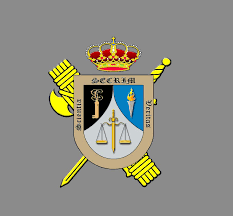Weather Chaos Update
December storms caused chaos in Alicante Province and the Murcia region over the weekend, with rainfall exceeding the total level accumulated for the whole of 2016. Blocked roads, fallen trees, and concern over the level of the river Segura were amongst the main issues, as three people drowned in the flood waters in the area,
December storms caused chaos in Alicante Province and the Murcia region over the weekend, with rainfall exceeding the total level accumulated for the whole of 2016. Blocked roads, fallen trees, and concern over the level of the river Segura were amongst the main issues, as three people drowned in the flood waters in the area, though one instance is suspected to be a suicide.
In the northern part of Alicante Province, a man, aged in his sixties (pictured), drowned in Finestrat, after he was swept away by the floods. He was trying to reach his car near the beach area in the Cala de Finestrat, despite neighbours shouting at him to get back indoors. Guardia Civil officers were called out on Saturday morning and sent out a search party, including scrambling a helicopter, before finding the victim’s body 20 minutes later in a cove. The incident was similar to that of a British couple that were swept away by flood water in the same area over five years ago.
There were two deaths in Los Alcázares on Monday, which suffered the brunt of the flooding on the Mar Menor. A 30-year-old Moroccan man drowned after the current on Calle de Las Adelfas dragged him into a private swimming pool at a property, with emergency services unable to revive him. Then in the evening, the body of a 47-year-old man was found in his flooded underground garage on Calle Calixto Sánchez Madrid. Emergency services said on Tuesday morning that he did not die because of the flood and were working on the theory that he committed suicide. His wife called the armed forces emergency response unit after her husband went to the garage to check on his car and did not return.
The rise in the levels of the River Segura saw its banks bursting in a number of parts of Orihuela City, leading to flooding for the first time since 1987, when the last such emergency happened. The Segura reached a height of six metres at various points, and in the early hours of Monday morning, it flowed over its banks around the Puente del Rey bridge in central Orihuela. Residents in the Mariano Cases area of the city had to be evacuated, whilst there was flooding outside the city on Monday between Molins and La Campaneta. Ten residents were also evacuated from Calle Ramón Rubia in the El Paraíso area of Torrevieja due to flooding on Sunday, with some of them staying in the Hotel Cabo Cervera or with friends or relatives. Almoradi council evacuated as a precaution some homes in Heredades on Monday situated close to the Segura in the vicinity of the Algorfa bridge whilst 150 people in the Los Alcázares municipality were taken to a centre at Los Narejos.
A Benidorm camping site had to be evacuated over the weekend whilst motorists, or residents in the Murcia region village of Torreagüera threatened by a potential rockslide, had to be evacuated. Meanwhile, Guardia officers helped a women give birth at her Mazarrón area home on Sunday as flooding meant that she and her husband could not get to hospital in Cartagena. Doctors on the end of a phone line talked them through making what was a safe delivery.
Authorities made a plea for people to avoid using secondary roads, with many blocked due to flooding and fallen trees in Alicante Province and the Mar Menor on Sunday and Monday. Problems though extended to key highways, with the AP-7 and N-332 blocked at Pilar de la Horadada. A car was caught in flooding on the N-332 at La Mata in Torrevieja, whilst an ornamental pergola was blown over the Paseo de La Mata close to a kiosk. A driver was rescued from a flooded car in the Almoradi area whilst a street lamp collapsed at Los Locos in Torrevieja, with gusts of over 80 kilometres an hour being recorded in the early hours of Sunday morning, with trees and advertising hoardings being blown down across the region. Roads continued to be closed in the Orihuela City area through till the middle of the week. Murcia emergency services said that over 350 people were rescued from their vehicles and homes, mainly in Los Alcázares, Murcia City, San Javier and Torre Pacheco, with key roads flooded across the Mar Menor municipalities. Water company Hirdraqua warned customers around San Javier not to drink tap water whilst flights to San Javier on Sunday and Monday, including four services from the UK, had to be diverted to Alicante-Elche airport.
Many beaches were battered over the weekend including Babylon beach in Guardamar, with seafront buildings hit by waves, whilst beaches on the Orihuela Costa, Pilar de la Horadada and Mar Menor areas were also affected by the storms. The underpass link to Playa Flamenca by the Town Hall was flooded, and there were many rockslides on the Orihuela Costa beaches, with the Rambla at Campoamor also affected. Streets were flooded next to Lo Pagan beach in San Pedro del Pinatar, and further north, beaches were ravaged at Pinet and Arenales in the Elche municipality, coupled with concerns over the safety of the Arenales de Sol hotel building, where development on the hotel’s revamp was suspended earlier in the year in a row over the project.
Schools in 71 municipalities in Alicante Province and the Murcia region were closed on Monday, with bus services also being suspended, along with court proceedings in Orihuela and Torrevieja. Operations and appointments were also cancelled at Orihuela’s Vega Baja hospital. Countless festive events were postponed last weekend or cancelled altogether, along with many sports fixtures, as the weather eventually relented on Monday, with the welcome return of sunshine.
Despite people being taken by surprise with the intensity of the weekend’s storms, weather expert Jorge Olcina (pictured) from Alicante University’s climatology department told the Informacion newspaper that it was not a unique phenomenon. “They were more common in the seventies and eighties”, said Olcina, “and were known as December constant rain. It’s not untypical of the Mediterranean climate where you can get barely get any rain all year long, and then you can get the full annual average coming down in just a few weeks”.
The heavy downpours brought mixed blessings to local farmers who have been crying out for rain during the long period of drought. The extra water is good news in the medium and long term, but the sheer intensity of the rain has led to most of the local Aledo grape harvest being wiped out, with the fruit being supplied across the area for the traditional New Year celebrations with the grapes being eaten on the stroke of midnight. Reports suggest that the majority of mandarin and broccoli plantations have been badly hit by the excess rain, along with many olives falling early to the ground.




























